 To migrate in one step from a Microsoft Mail (PC) postoffice
To migrate in one step from a Microsoft Mail (PC) postoffice| Migration | << | >> |
|---|
If you don't need to make changes to the common name of the mailboxes, you can use the following procedure.
 To migrate in one step from a Microsoft Mail (PC) postoffice
To migrate in one step from a Microsoft Mail (PC) postoffice
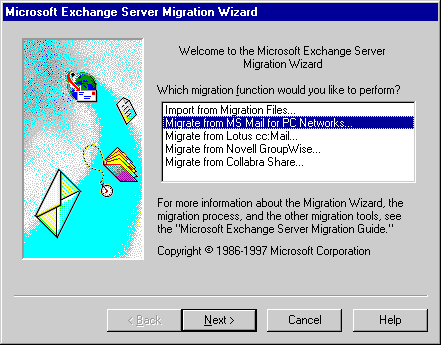
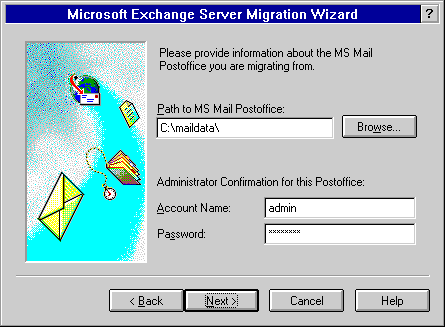
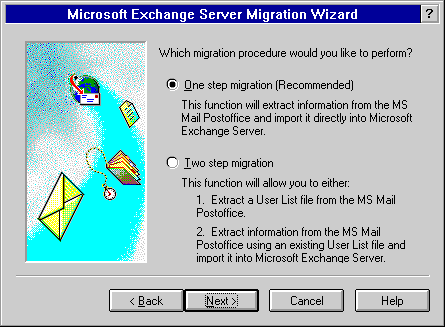
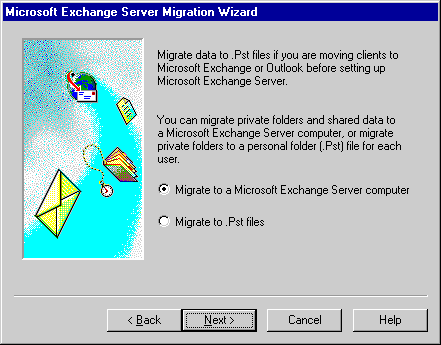
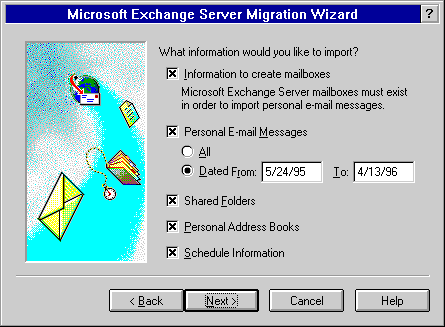
| Option | Description |
|---|---|
| Information to create mailboxes | Creates mailboxes for the selected users in the user list file. Clearing this check box imports messages to existing mailboxes or converts existing custom recipients to mailboxes. |
| Personal E-mail Messages | Copies all messages and folders from the selected user's mailbox and server-based MMF. You can select all or set a range. |
| Shared Folders | Copies all shared folders to the public folder server of this server. |
| Personal Address Books | Copies PAB entries in MMFs and puts them into the selected user's inbox in a special message. |
| Schedule Information | Copies calendar files from the CAL directory on the postoffice to a special message in the selected user's inbox. |

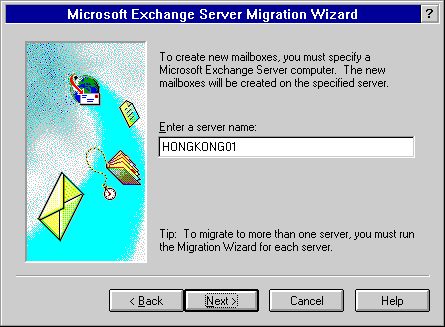
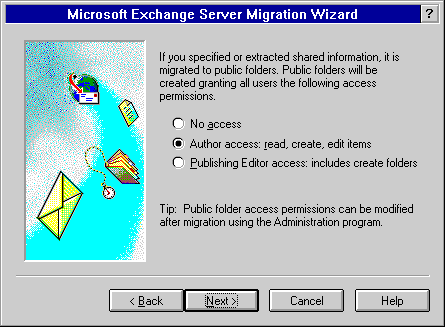
| Option | Description |
|---|---|
| No access | Creates public folders that only the administrator can access. |
| Author access | Creates public folders in which everyone can read existing messages and create new ones. The administrator is assigned Administrator permissions. |
| Publishing Editor access | Creates public folders and adds subfolder creation permissions in addition to author access. |
Note The administrator account that is being used to run the Migration Wizard is granted Administrator permissions for all public folders. Additional permissions can be assigned after the Migration Wizard has imported the folders.
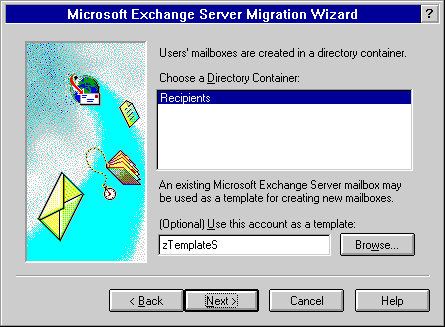
Note You cannot move a mailbox from one directory container to another after the mailbox has been created.
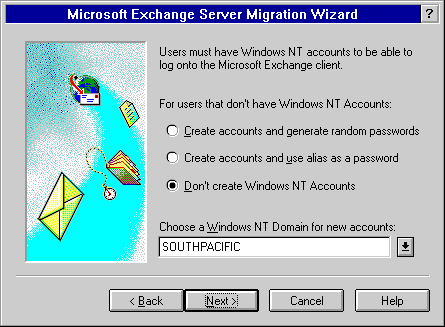
| Option | Description |
|---|---|
| Create accounts and generate random passwords | Accounts are created with names that match the common name and random passwords. The passwords are written to the ACCOUNT.PASSWORD file in the working directory of the Migration Wizard. For users to log on to Windows NT, you need to distribute these passwords. |
|
Create accounts and use alias as password |
Accounts are created with names and passwords that match the common name. |
| Don't create Windows NT accounts | If a Windows NT account that matches the common name of a mailbox does not exist, create the mailbox without an associated Windows NT account. No one will be able to access this mailbox until a Windows NT account is associated with it. |
Note The Migration Wizard associates the Windows NT account, if one exists, in the specified domain that has the same name as the common-name of a mailbox, no matter which option is selected.